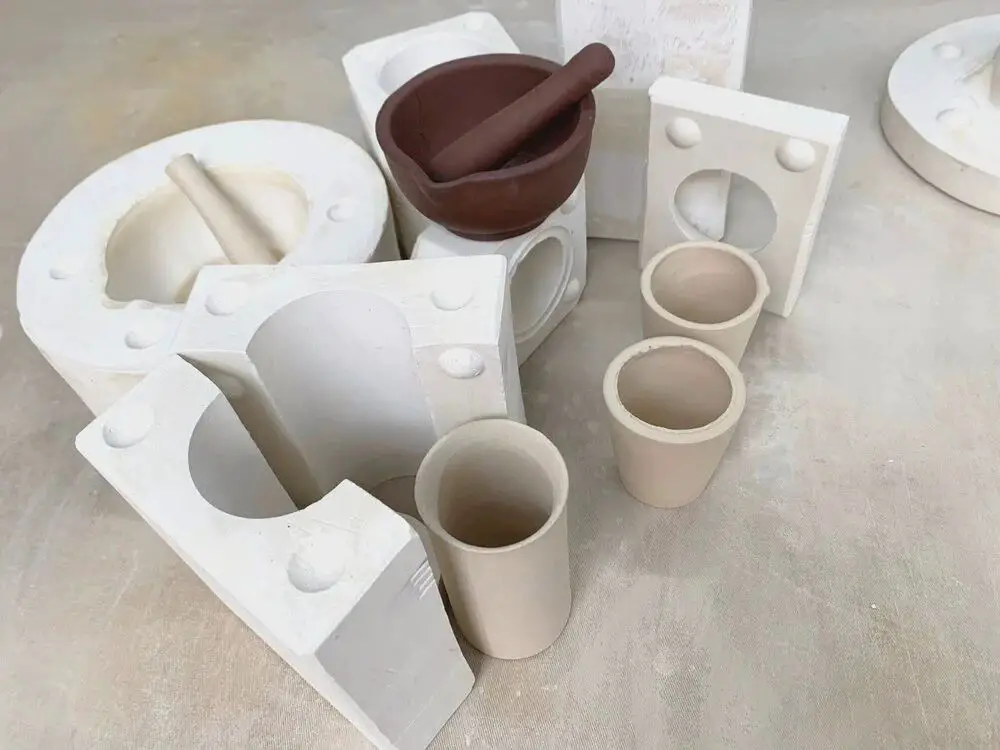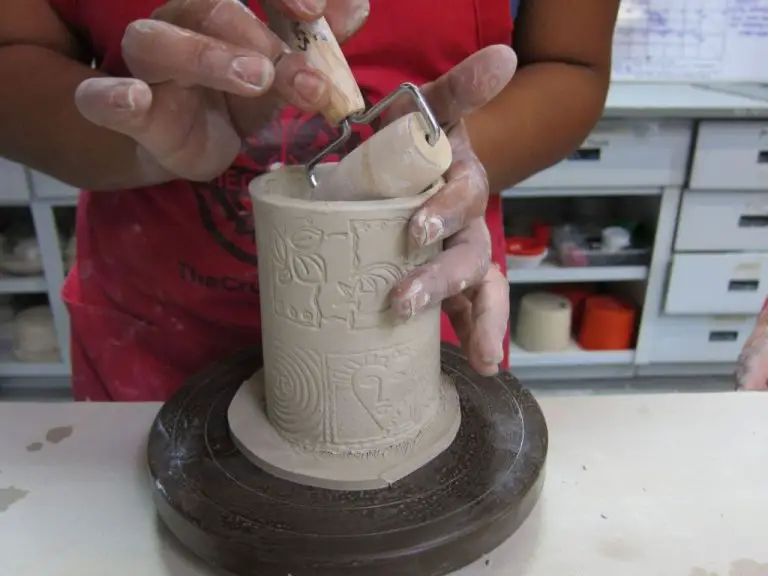What Are The 5 Methods Of Construction Ceramics?
Ceramic materials have been used in construction for thousands of years. From ancient bricks and tiles to modern cement and composites, ceramics play a key role in buildings, infrastructure, and other structures due to their durability, strength, thermal properties, and aesthetics. This article provides an overview of the most common methods used to manufacture construction ceramics today.
The purpose of this article is to explain the major manufacturing processes used to produce the many ceramic products found in the construction industry. Understanding how these materials are made allows for a deeper appreciation of their unique properties and advantages in building applications.
Extruded Ceramics
Extrusion is a process used to create ceramic products with a constant cross-section. The clay body is pushed through a die by a screw or ram to produce a continuous shape (Corning). This allows efficient production of products like pipes, tiles, and refractory shapes. Some key points about extruded ceramics:
– The clay has a moisture content between 14-20% to make it plastic enough for extrusion (Toolnotes). It is often blended, vacuum de-aired, conditioned, and fed into an extruder.
– Dies determine the exterior profile. Simple and complex profiles can be extruded with the proper die design (Ceramic Arts Library).
– Benefits include the ability to produce complex, consistent shapes rapidly and continuously at high volumes (Corning). The process is cost-efficient compared to other methods.
– Extruded products include tiles, dinnerware, spark plug insulators, catalyst supports, and more. Larger extruded wares are refractory bricks, clay pipe, and roofing tiles (Ceramic Arts Library).
Dry-Pressed Ceramics
Dry pressing, also known as pressing molding, is a commonly used method for ceramic molding. By putting ceramic powder into a metal mold and applying pressure, the ceramic powder is compacted into a desired shape (https://machiningceramic.com/ceramic-dry-pressing/). This is one of the most economical ways to mass produce simple ceramic parts with good precision and consistency.
Dry pressing is used for manufacturing a variety of ceramic products including insulators, ferrites, capacitors, tiles, refractories, and technical ceramics. It is commonly used for mass production of ceramic parts that do not require extremely complex geometries or thin walls (https://www.sciencedirect.com/topics/engineering/dry-pressing).
The advantages of dry pressing include its speed and low cost for high volume manufacturing. It also allows flexibility in the shape of parts. The main disadvantages are limits on part intricacy and wall thickness, as well as lower strength compared to other methods. Cracking or chipping can also occur during pressing or handling if the part design is not optimized.
Slip Casting
Slip casting is a common method for shaping ceramics. In slip casting, liquid clay slip is poured into a plaster mold. The plaster absorbs water from the slip, forming a layer of solid clay on the mold surface. Excess slip is poured out, leaving a hollow clay form.

Slip casting is often used for mass production of detailed ceramic pieces. The plaster mold can capture intricate shapes that would be difficult to achieve with other methods. It allows for consistency and uniformity across multiples castings. Slip casting is also used by artists and hobbyists to replicate decorative objects like vases or figurines. Molds can be reused many times to produce multiple castings.
The main advantage of slip casting is its ability to produce complex shapes with precision and detail. It also allows for consistency across production runs. Limitations include restrictions on size and wall thickness. Very large or thick-walled objects may deform under their own weight before the clay sets up. Slip casting also requires an initial mold to be made, which adds time and cost (The Crucible).
Overall, slip casting is ideal for detailed, small-scale ceramic production. Its efficiency and consistency make it popular with commercial manufacturers as well as studio artists. With the right mold, intricate ceramic objects can be replicated precisely and efficiently via slip casting.
Ram Pressing
Ram pressing, also known as the RAM process, is a manufacturing method for ceramics that uses a hydraulic press and permeable plaster molds to form ceramic shapes (http://ramprocess.com/Process/index.htm). The process involves pouring ceramic powder slurry into a plaster mold and then using pressure to compress the powder into a dense, shaped product.
Some common products made through ram pressing include ceramic tiles, spark plug insulators, ferrite magnets, and technical ceramics. The process excels at producing large, simple shapes with good dimensional precision (http://ramprocess.com/).
Advantages of ram pressing include its ability to produce complex geometries, reasonable tolerance capabilities, and low equipment costs compared to other methods. Limitations include restrictions on the fineness of detail that can be achieved and the need for secondary finishing operations in some cases.
Isostatic Pressing
Isostatic pressing is a manufacturing method in which uniform pressure is applied equally from all directions to compact and consolidate a powder material. It uses an inert gas or fluid as the pressing medium inside a hermetically sealed flexible mold or “bag”. Two types of isostatic pressing exist: hot isostatic pressing (HIP) which is conducted at high temperature, and cold isostatic pressing (CIP) which operates at room temperature. CIP is commonly used for ceramics, while HIP is often used for metals.
Isostatic pressing creates uniform, high-density, and low-porosity parts. It can produce complex shapes, eliminate internal voids, and develop a uniform microstructure. Isostatic pressing is suitable for both simple and complex geometric components. It also minimizes material waste and allows very high production rates of small parts.
Some key benefits of isostatic pressing include:
- High production rates
- Low material waste
- Uniform compaction and microstructure
- Ability to form complex shapes
- Elimination of internal voids
Sources:
Isostatic Pressing – an overview
Tape Casting
Tape casting is a popular processing method for ceramics that produces thin and flat sheets or tapes. It involves casting a thin layer or tape of a ceramic slurry onto a substrate, which is then dried and sintered to produce a final ceramic sheet (Wikipedia). The ceramic slurry contains ceramic powder, solvents, binders and plasticizers.
Some key aspects of the tape casting process include (ScienceDirect):
- The slurry is poured onto a moving substrate, using a casting blade to control thickness
- The cast tape is then dried, allowing the solvent to evaporate and leaving a flexible green tape
- The binders and plasticizers provide strength and flexibility to the green tape
- The dried tape is cut to size and then sintered to produce a dense ceramic sheet
Tape casting has several advantages over other ceramic forming processes. It allows very thin and flat ceramics to be produced with tight tolerances. Complex multilayer devices with different material compositions can be created by stacking and laminating multiple tape cast layers. It is also a continuous process suitable for high volume production.
Compared to dry pressing, tape casting can produce thinner and larger sheets more efficiently. But dry pressing has the advantage of using less binders and additives. Tape casting also has some benefits over extrusion, allowing more flexibility in controlling sheet thickness and producing thinner tapes.
Injection Molding
Injection molding is a manufacturing process for producing parts by injecting molten material into a mold. Ceramic injection molding (CIM) uses this process to make complex ceramic parts.
In CIM, a mixture of ceramic powder and binder is injected into a mold under high temperature and pressure. The binder holds the ceramic particles together as the part solidifies. After molding, the binder is removed through debinding and the part is sintered to produce a high-density ceramic part.
CIM is well-suited for making small, complex, and high-precision ceramic components like nozzles, valves, insulators, seals, and turbine blades [1]. The process can create intricate shapes not easily made by other methods.
Advantages of CIM include good surface finishes, low scrap rates, and the ability to produce complex geometries in high volumes. Downsides include high startup costs for tooling and equipment. The binder removal and sintering steps also add time compared to plastic injection molding.
Gelcasting
Gelcasting is a unique method of fabricating ceramics that uses a monomer solution rather than just water as the liquid medium. The process involves mixing ceramic powder with monomers that can be polymerized into a gel. This gel-ceramic mixture is molded and then dried, which causes the monomers to polymerize via a catalyzed reaction into a solid gel that holds the ceramic particles in place (Zhang, 2006).
One major advantage of gelcasting over other forming techniques is that it allows for very high solids loading, up to 60% ceramic powder by volume. This minimizes shrinkage during drying. Gelcasting can produce complex and delicate shapes with fine details and tight dimensional tolerances. Products made by gelcasting include ceramic turbomachine components, porous ceramics for filters or catalyst substrates, ceramic shells for investment casting, and ceramic dental crowns (Ghosal, 2011).
In summary, gelcasting is a unique ceramics processing method that utilizes in-situ polymerization of monomers to form complex and detailed green parts that can be fired into high quality ceramics (Sciencedirect, n.d.). The flexibility in molding combined with low drying shrinkage makes it ideal for many advanced ceramic applications.
Conclusion
In summary, the five main methods of construction ceramics are extruded ceramics, dry-pressed ceramics, slip casting, ram pressing, and isostatic pressing. Each method has its own advantages and is suited for different applications.
Extruded ceramics involves forcing clay through a die to create long pieces with a uniform cross-section. This allows high volume production of simple shapes like bricks. Dry pressing compacts clay in a mold to produce complicated shapes with tight tolerances. Slip casting involves pouring liquid clay into a plaster mold to form a hollow cast piece after drying. It can make complex shapes with thin walls.
Ram pressing uses a hydraulic press to compact clay in a mold. It enables intricate shapes and designs. Isostatic pressing uses uniform pressure from a liquid or gas to compact clay powder in a rubber mold. It makes complex shapes with high density and strength. In summary, the choice of construction method depends on the geometry, quality, and productivity needs of the application.



